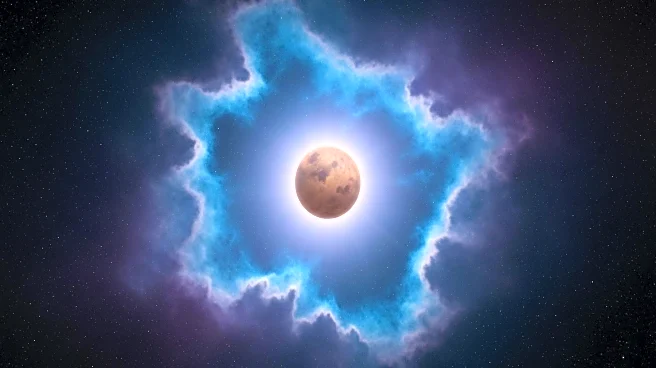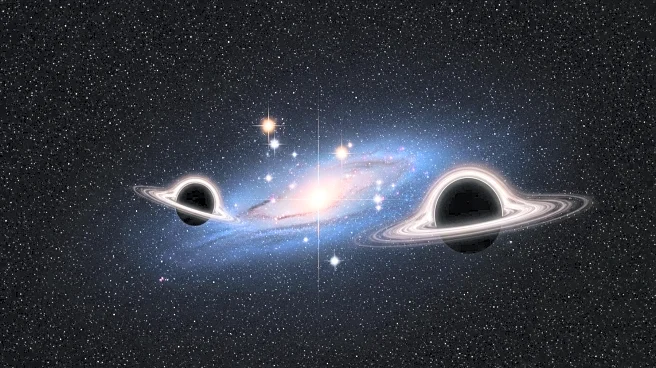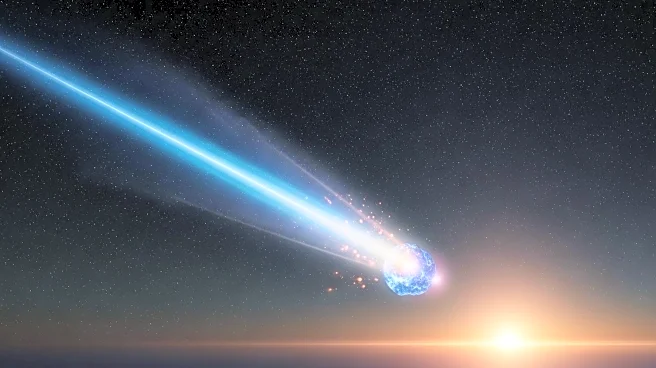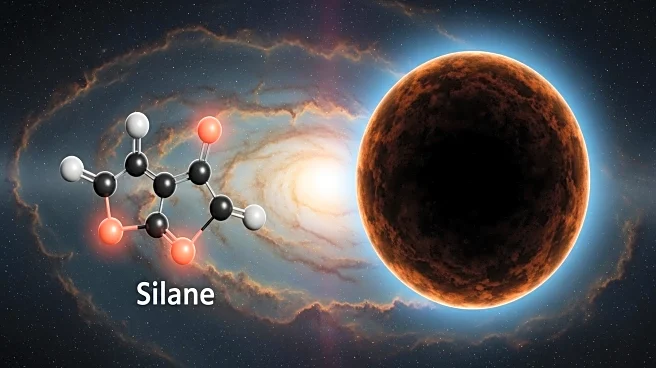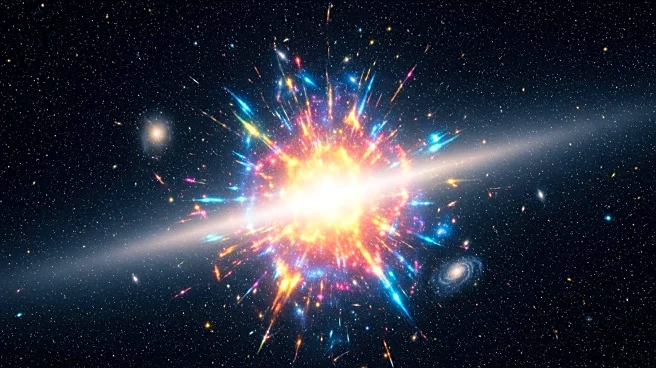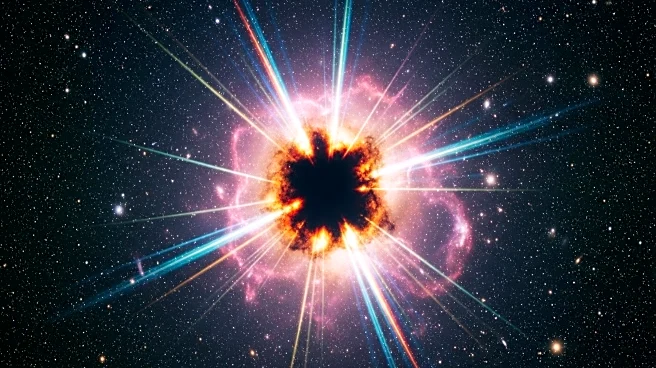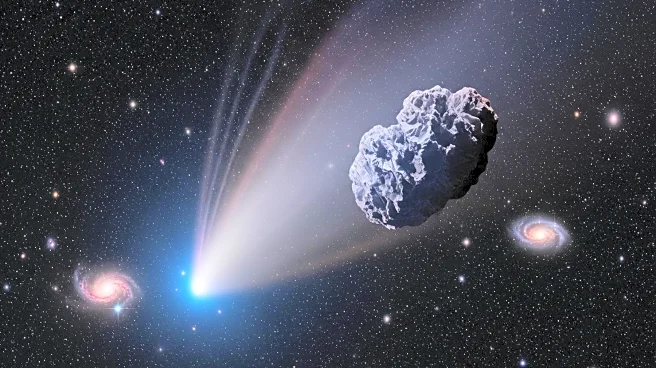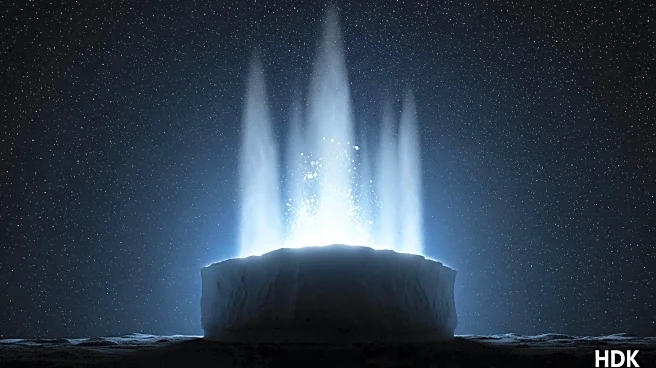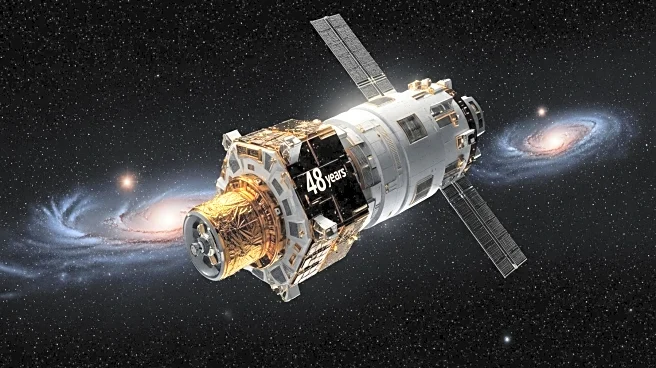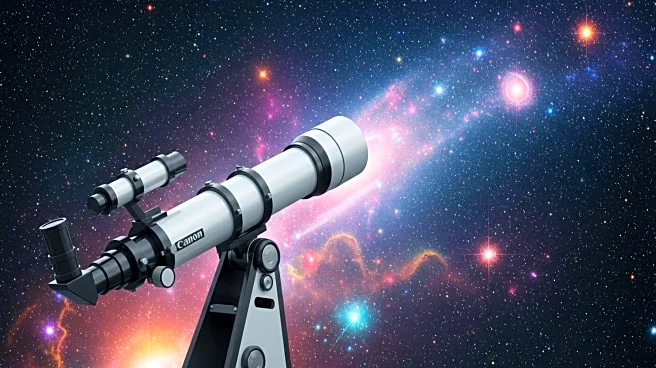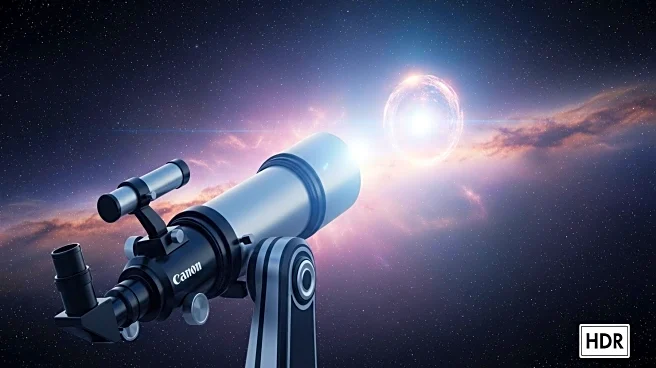What is the story about?
What's Happening?
NASA's James Webb Space Telescope has provided new insights into the atmospheric chemistry of Jupiter and Saturn through the study of a peculiar brown dwarf known as 'The Accident.' Discovered by chance in 2020, this brown dwarf exhibits a unique mix of features, some typical of young brown dwarfs and others of ancient ones. The study, published in Nature, reveals the presence of silane, a silicon molecule, in 'The Accident's' atmosphere. This discovery is significant as silane has been elusive in the atmospheres of gas giants like Jupiter and Saturn, as well as in other brown dwarfs. The findings suggest that silicon, while present, is often hidden deep within the atmospheres of these planets, bound to oxygen and forming oxides that sink beneath lighter cloud layers.
Why It's Important?
The discovery of silane in 'The Accident' provides a new understanding of the atmospheric chemistry of gas giants and brown dwarfs. It suggests that the presence of silane is influenced by the availability of oxygen during the formation of these celestial bodies. This insight could help scientists better understand the atmospheric conditions of exoplanets and gas giants, potentially aiding in the search for habitable planets. The study highlights the importance of extreme objects in understanding average ones, offering a glimpse into the complex chemical processes that occur in planetary atmospheres.
What's Next?
The study opens up new avenues for research into the atmospheric chemistry of gas giants and brown dwarfs. Scientists may continue to explore the presence of silane and other molecules in similar celestial bodies, using advanced telescopes like the James Webb Space Telescope. This research could lead to a deeper understanding of the formation and evolution of planetary atmospheres, potentially impacting the search for life on exoplanets. Further studies may also focus on the implications of these findings for the atmospheric models of gas giants and brown dwarfs.
Beyond the Headlines
The discovery of silane in 'The Accident' raises questions about the chemical processes in ancient celestial bodies. It suggests that the early universe's elemental composition played a significant role in shaping the atmospheres of these objects. This finding could lead to a reevaluation of the atmospheric models used for gas giants and brown dwarfs, considering the impact of historical elemental availability. The study also underscores the importance of citizen science programs like Backyard Worlds: Planet 9 in contributing to significant astronomical discoveries.
AI Generated Content
Do you find this article useful?
